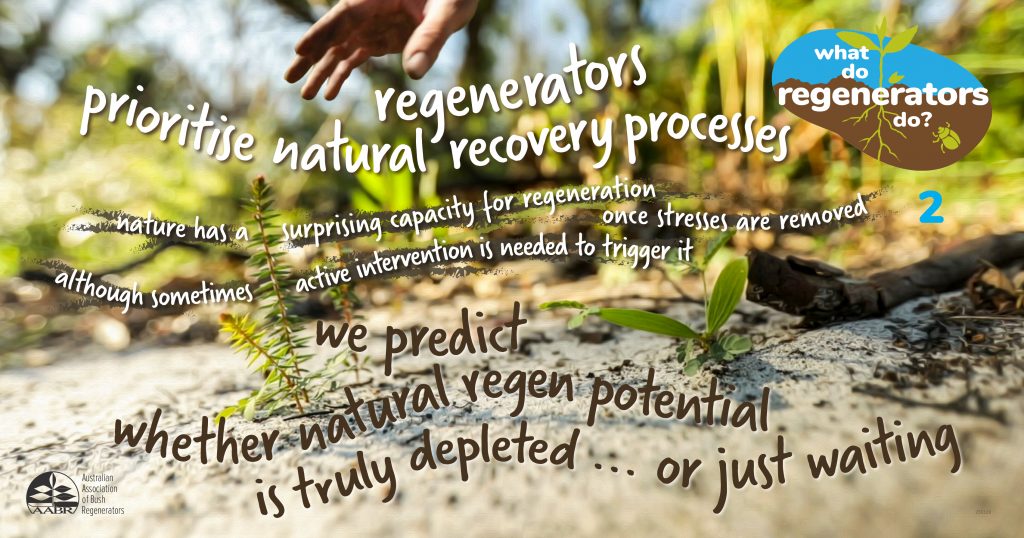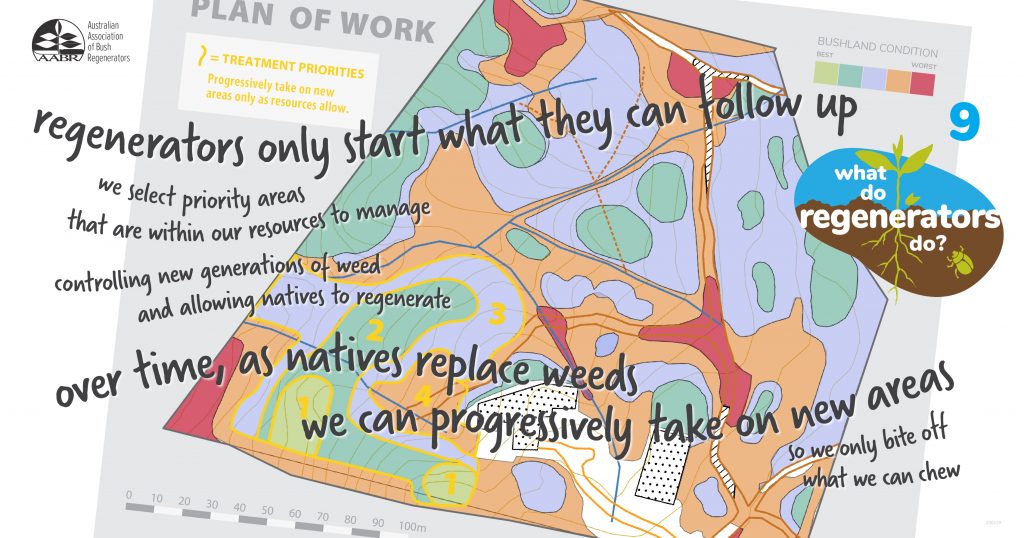Modern bush regeneration – a key component of ‘ecological restoration
Modern ‘bush regeneration’ owes a lot to the early work of the Bradley sisters who, in the late 1960s and 1970s, developed the early methods of bush regeneration.
The subsequent adoption of what were referred to as ‘minimal disturbance’ bush regeneration methods increased in the decades that followed the work of the Bradleys. Their principles have guided remnant restoration programs in Australia, although the inclusion of herbicide and more appropriate ‘ecological disturbance’ in modern bush regeneration are notable changes from classic methods.
The increased awareness and consideration of Australia’s biodiversity and the success of bush regeneration programs (now also refered to as ‘assisted natural regeneration’) has gradually led to the adoption of bush regeneration programs by virtually all councils in the greater Sydney area (and many others throughout NSW and other states).
While assisted natural regeneration remains the focus of AABR, other approaches to ecological restoration that reinstate and reinforce an ecosystem’s ongoing natural regeneration processes are supported and promoted by AABR.
Definitions of terms and an explanation of how assisted natural regeneration fits into the broader context of ecological restoration are provided in AABR’s publications:
- AABR’s Guiding Principles for Ecological Restoration and Rehabilitation.
- AABR Info Sheet 1 – Repairing degraded bush patches (Word PDF)
- AABR Info Sheet 2 – Reading the resilience of your site (Word PDF)
- AABR Info Sheet 3 – Different Australian vegetation types (Word PDF)
- AABR Info Sheet 4 – Deciding on the best treatments (Word PDF)
- AABR Info Sheet 5 – Birds can assist with rainforest regeneration (Word PDF)
The Forest Ecosystem Restoration Initiative, SER and Partners has published:
Some useful insights from the bush regeneration movement
This recorded webinar is provided by Landcare Australia as part of its Landcare Webinar Series in Natural Resource Management – traditional methods to modern innovation.
AABR stalwart Tein McDonald presents ‘Some useful insights from the bush regeneration movement’.
You are invited to subscribe to Landcare to attend any future session in the series and access past recordings (free).



Leave A Comment